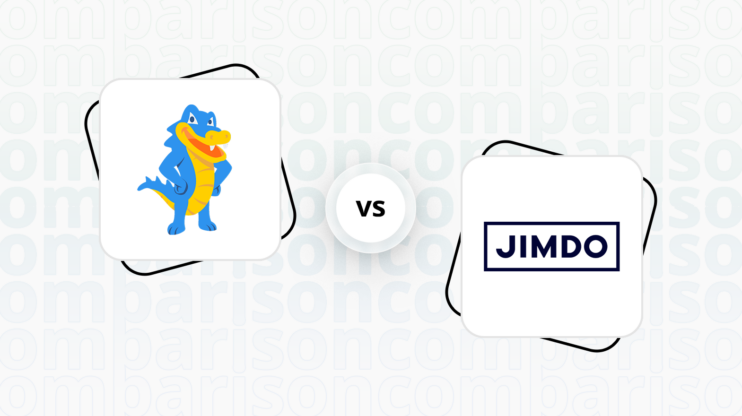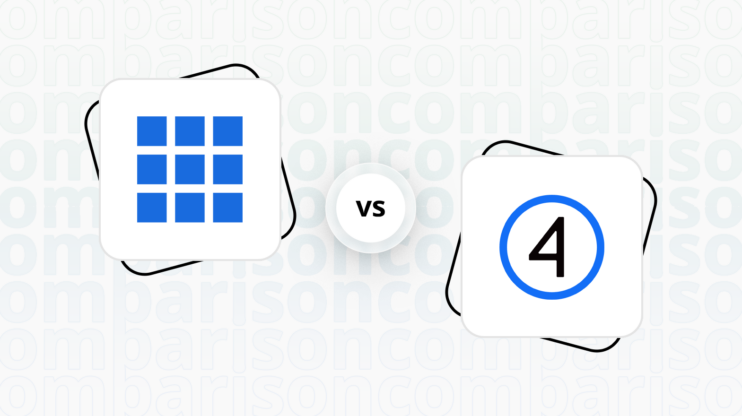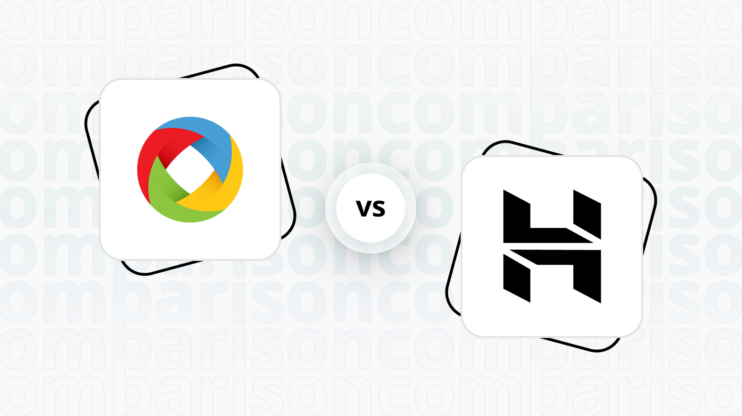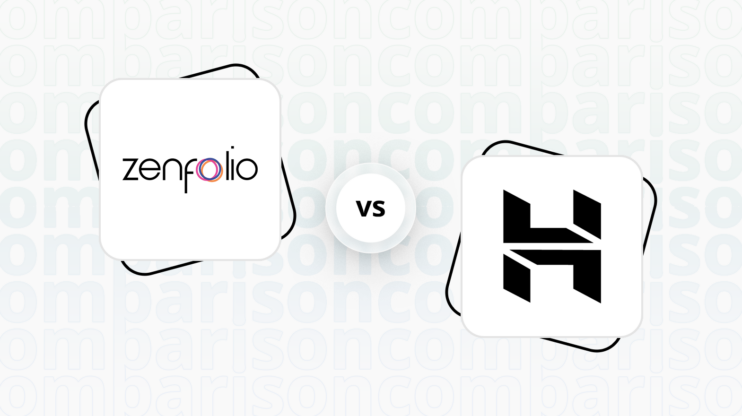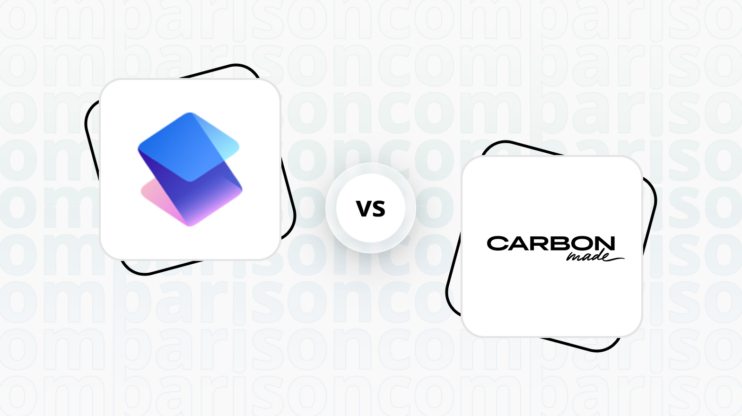Final verdict
Adobe Portfolio and Webnode cater to different user needs, each excelling in their respective domains.
-
Adobe Portfolio (Overall Grade: 5.5/10)
is tailored for creative professionals who want to showcase their work in a visually appealing manner. With its seamless integration with Adobe Creative Cloud, it offers an intuitive interface and a range of customizable templates designed for photographers, graphic designers, and artists. However, it lacks ecommerce capabilities and advanced customization options, making it less suitable for users looking to build an online store or a highly interactive website. -
Webnode (Overall Grade: 6.5/10)
is a versatile website builder that appeals to beginners and small businesses. Its drag-and-drop interface and variety of templates make it easy to create a professional-looking website quickly. Webnode also offers ecommerce features, making it a viable option for those looking to set up an online store. While it may not offer the same level of design sophistication as Adobe Portfolio, its affordability and user-friendly approach make it a strong contender for users seeking a straightforward website building experience.

|

|
|
|---|---|---|
|
Design functionalities & templates |
7.4 |
7.1 |
|
Ease of use |
8.7 |
8.0 |
|
Ecommerce |
0.0 |
6.3 |
|
Website Editors |
7.4 |
7.3 |
|
Product testing options |
7.6 |
5.3 |
|
Price |
7.7 |
7.7 |
|
Hosting quality |
7.0 |
6.3 |
|
Website speed optimization |
6.2 |
6.1 |
|
Plugins and integrations |
6.7 |
6.8 |
|
Marketing features |
3.7 |
5.5 |
|
Customer support |
7.3 |
5.3 |
|
Security |
8.1 |
7.7 |
|
AI capabilities |
0.0 |
5.3 |
|
User Management |
3.0 |
6.9 |
Best for ecommerce
 0.0
0.0
 6.3
6.3
Verdict
: Adobe Portfolio is not designed for ecommerce, making Webnode the better choice for online stores.
-
Adobe Portfolio
: Adobe Portfolio is tailored for creative professionals to showcase their work and does not include any ecommerce features. It is ideal for photographers, graphic designers, and artists who need a visually appealing platform to display their portfolios. However, it lacks the necessary tools for setting up and managing an online store, making it unsuitable for ecommerce purposes. -
Webnode
: Webnode offers a range of ecommerce features, including shipping options, payment gateway integrations, and order management. It provides ecommerce-specific templates and extensive customization options for product pages, making it a viable option for those looking to create an online store. While it may not have the advanced capabilities of some other platforms, it is a solid choice for beginners and small businesses looking to establish an online presence.
Best for informational & business websites
 7.4
7.4
 7.2
7.2
Verdict
: Adobe Portfolio slightly edges out Webnode for informational and business websites, thanks to its polished design functionalities and seamless integration with Adobe Creative Cloud, making it ideal for creative professionals. Webnode, while user-friendly and versatile, falls just short in comparison.
-
Adobe Portfolio
: Adobe Portfolio is tailored for creative professionals who need a visually appealing and professional online presence. Its integration with Adobe Creative Cloud and a variety of customizable templates make it an excellent choice for photographers, graphic designers, and artists. The platform’s ease of use and comprehensive support options further enhance its appeal for users looking to showcase their work effectively. -
Webnode
: Webnode offers a straightforward drag-and-drop interface, making it accessible for beginners who want to create a simple website quickly. It provides a variety of templates and multilingual support, catering to a broad audience. While it may lack some advanced customization options and integrations, Webnode is a solid choice for those seeking an easy-to-use platform for creating and managing their online presence.
Detailed comparison
Design functionalities & templates
Design FunctionalitiesRepresents how well each platform allows for creative design and customization of websites.Score Components:
- Template Variety (30%): Range and quality of design templates.
- Customization (30%): Flexibility and options for design alterations.
- User Interface (20%): Ease and intuitiveness of the design process.
- Responsiveness (10%): Adaptability to different devices and screen sizes.
- Innovation (10%): Unique design features and tools.
 7.4
7.4
 7.1
7.1
🏆
Winner: Adobe Portfolio.
If you’re a creative professional looking for a platform that offers a more polished and professional presentation of your work, Adobe Portfolio is the preferred choice.
Adobe Portfolio offers a selection of customizable templates designed for creatives across various fields, such as photography, graphic design, and web design. These templates are responsive and tailored to showcase creative work effectively across all devices. With the intention of adding more layouts over time, Adobe Portfolio provides a flexible foundation for users to personalize and present their projects in a polished manner.
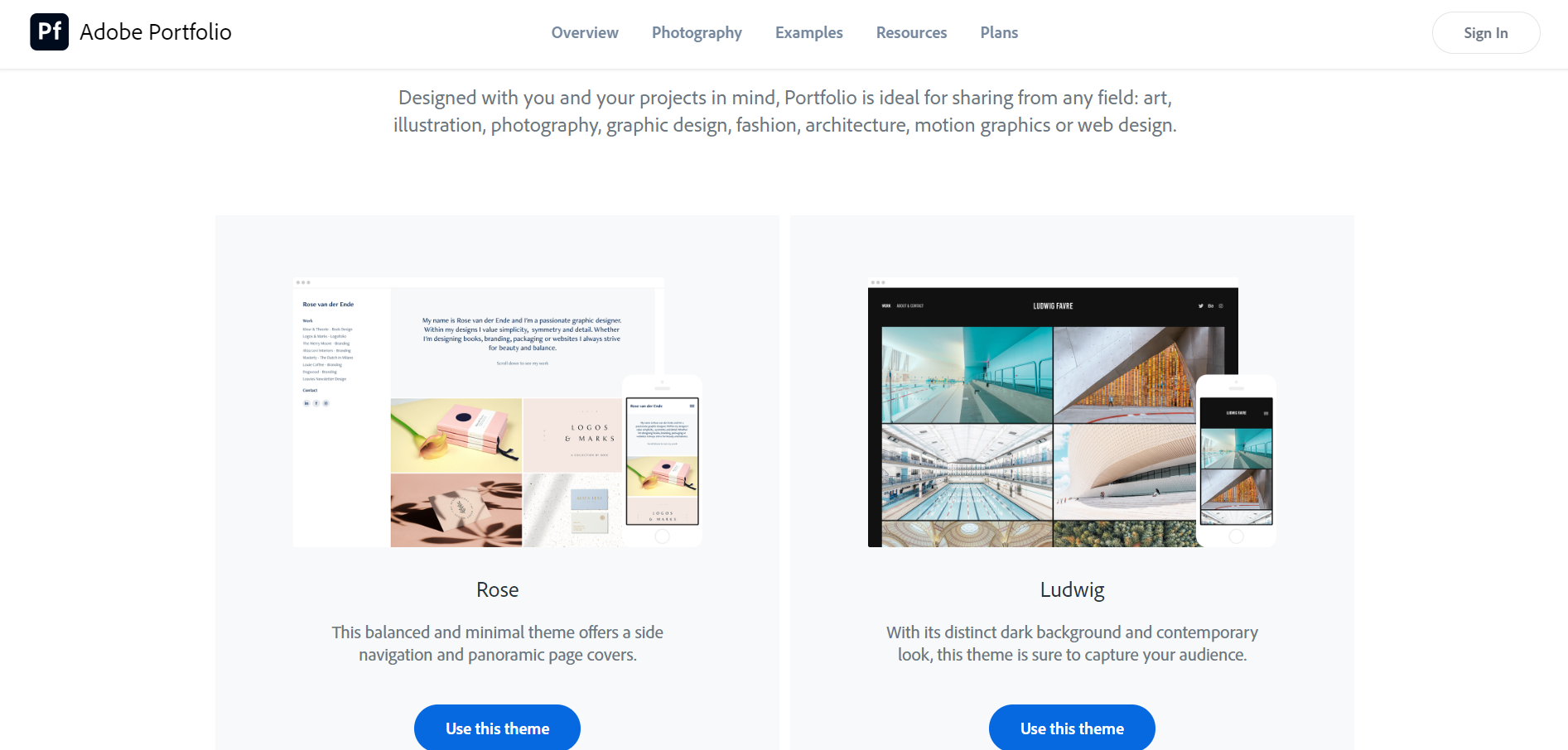
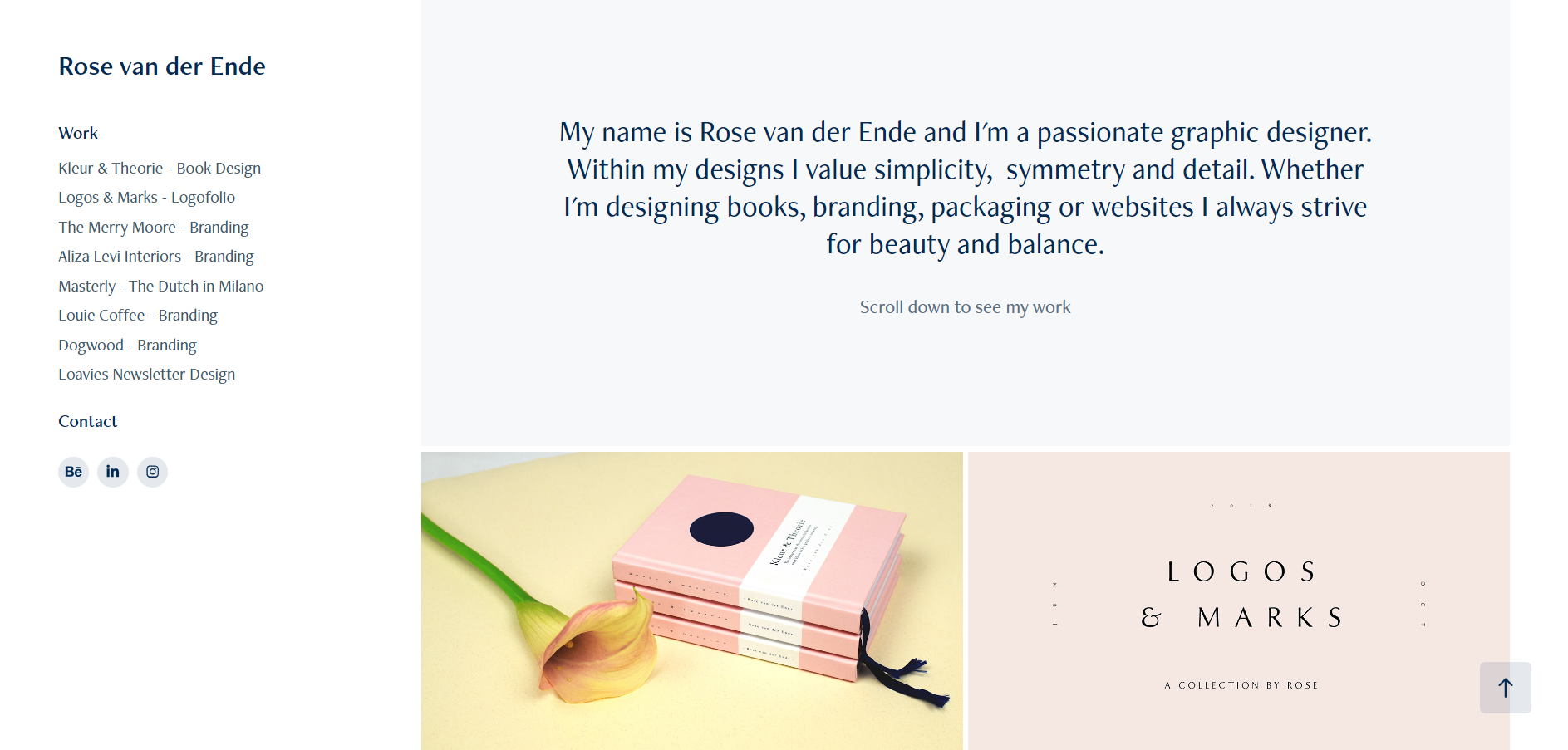
Webnode offers a variety of website templates designed for different purposes, from business and portfolios to restaurants and travel. These templates are customizable and responsive, ensuring they display well on any device. While an exact number isn’t available, Webnode provides a wide selection to cater to diverse website needs.
Get a head start on website creation with AI
Create a custom website tailored to your business needs 10X faster with 10Web AI Website Builder!
Ease of use
Ease of useReflects the platform’s overall user-friendliness.Score
Components:
- Learning curve (40%): Quickness and ease of getting started.
- Interface design (30%): Simplicity and intuitiveness of layout.
- User guidance (20%): Quality of tutorials and support.
- Flexibility (10%): Adaptability to various user skills.
 8.7
8.7
 8.0
8.0
🏆 Winner: Adobe Portfolio
. Scoring 8.7, Adobe Portfolio is designed with creative professionals in mind, offering an intuitive interface and seamless integration with Adobe Creative Cloud. This makes it exceptionally easy for users to create visually appealing websites without extensive web design knowledge. Webnode, with a score of 8.0, is also user-friendly, featuring a drag-and-drop interface suitable for beginners, but it may lack the advanced customization options some users seek.
Learning Resources
🏆 Winner: Adobe Portfolio
. Adobe Portfolio provides extensive and varied learning resources, including detailed tutorials and interactive guides, making it easier for users to efficiently create and manage their online portfolios. Webnode also offers a variety of learning resources, but Adobe Portfolio’s comprehensive support and integration with Adobe Creative Cloud give it an edge.
For ecommerce
EcommerceMeasures the platform’s effectiveness in supporting online business activities.Score Components:
- Ecommerce themes and templates (20%): Variety and design of templates.
- Product management (25%): Ease of managing and organizing products.
- Payment options (25%): Variety and convenience of payment methods.
- Ecommerce features (20%): Features for managing an ecommerce store.
- Integration (10%): Compatibility with external e-commerce tools and services.
 0.0
0.0
 6.3
6.3
Adobe Portfolio is not designed for ecommerce and lacks any ecommerce capabilities. It is primarily aimed at creative professionals who want to showcase their work. On the other hand, Webnode offers a range of ecommerce features, making it a more suitable option for those looking to create an online store.

|

|
|
|---|---|---|
|
Ecommerce themes and templates |
0.0 |
6.5 |
|
Product page customization |
0.0 |
7.0 |
|
Payment processing and commissions |
0.0 |
6.8 |
|
POS capabilities |
0.0 |
4.0 |
|
Payment gateways |
0.0 |
7.0 |
|
Product numbers |
0.0 |
5.5 |
|
Additional ecommerce features |
0.0 |
6.0 |
Adobe Portfolio ecommerce features:
Adobe Portfolio does not have any ecommerce features.
Webnode ecommerce features:
- Shipping options
- Payment gateway integrations
- Order management
- Coupons and discounts
Ecommerce themes & templates
Adobe Portfolio does not offer any ecommerce-specific templates. In contrast, Webnode provides ecommerce-specific templates designed for creating online stores. These templates typically come with features such as product showcasing, shopping cart functionality, support for various payment gateways, and customization options. However, users should be mindful of potential limitations such as customization restrictions, feature limitations based on plan tiers, transaction fees, and integration limitations when choosing a template and plan for their ecommerce website on Webnode.
Product page customization
Adobe Portfolio does not have product page customization features. Webnode, however, provides users with extensive customization options for product pages, allowing for the creation of visually appealing and informative displays. Through customizable content blocks, product images and galleries, and tailored product descriptions, users can effectively showcase their products. Additionally, features such as customizable call-to-action buttons, product variations, and SEO optimization contribute to a seamless and optimized shopping experience.
Payment processing
Adobe Portfolio does not have any payment processing capabilities. Webnode supports various payment gateways, including popular options like PayPal and Stripe, for online transactions. While Webnode itself doesn’t charge commissions on transactions, payment gateways may have their own fee structures. Webnode primarily focuses on facilitating online transactions and doesn’t provide native POS capabilities, although integration with third-party POS solutions may be possible. For the latest information on supported payment gateways, transaction fees, and POS integrations, users should refer to Webnode’s official documentation or contact their customer support.
Website Editors
Website EditorsEvaluates the platforms’ website building and editing capabilities.Score Components:
- Customization tools (40%): Range and power of editing features.
- Editor usability (30%): User experience within the editor.
- Design flexibility (20%): Freedom in layout and design changes.
- Update and maintenance ease (10%): Simplicity of updating and maintaining the site.
 7.4
7.4
 7.3
7.3
🏆
Winner: Adobe Portfolio
. Adobe Portfolio, with a score of 7.4, offers a user-friendly website builder editor designed for creatives to showcase their work. With it, users can easily create and customize their own professional-looking websites without needing to code. The editor allows for the integration of high-quality images and videos, offers a variety of responsive templates tailored to different creative fields, and provides seamless Adobe Creative Cloud integration, enabling users to directly import their work. Additionally, Adobe Portfolio supports custom domain names and offers access to Adobe Fonts, enhancing the aesthetic appeal and functionality of the user’s website.
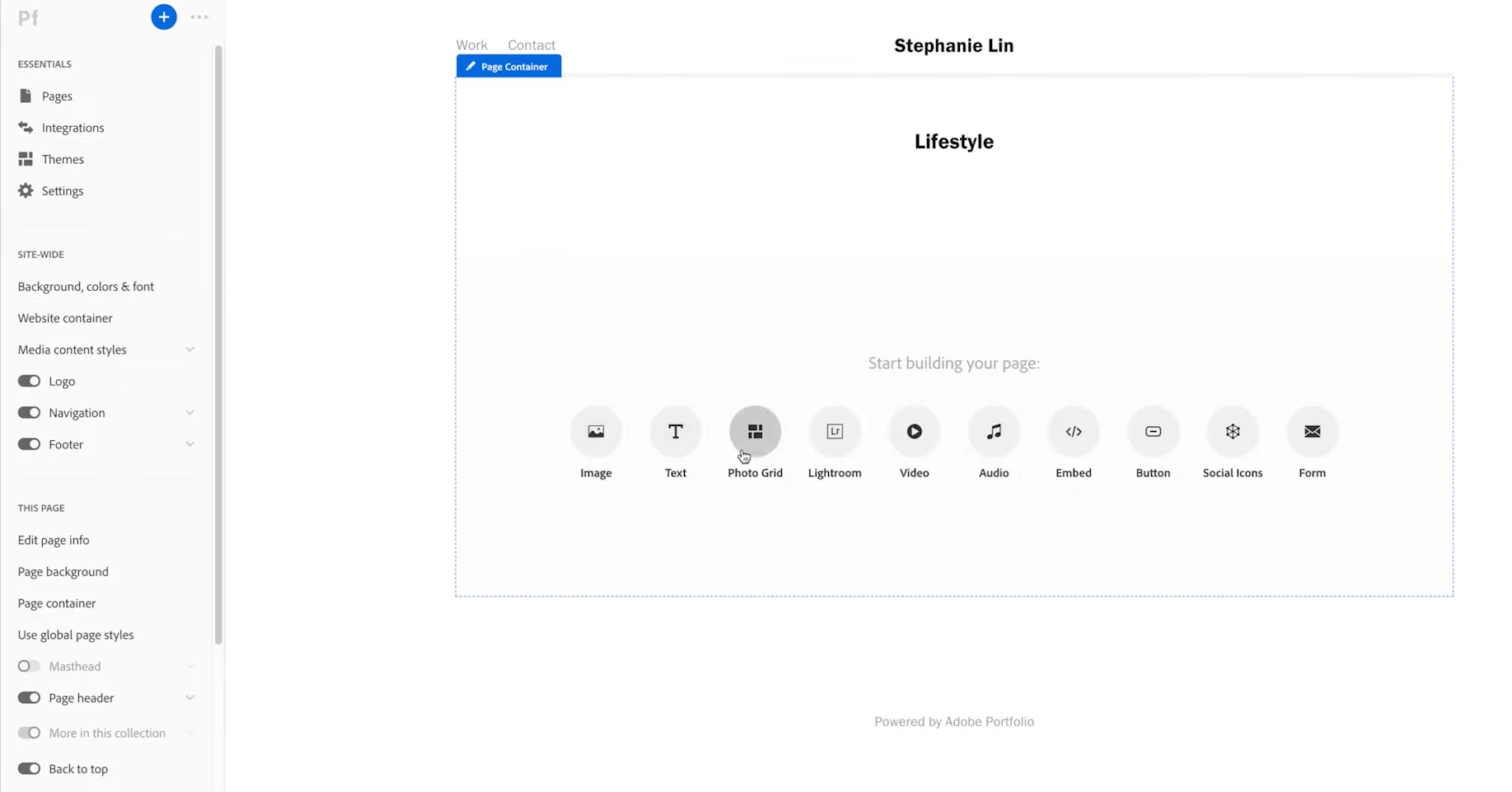
Webnode’s editor, scoring 7.3, features a user-friendly drag-and-drop interface with customizable templates, enabling users to easily create professional-looking websites without coding skills. The editor offers responsive design capabilities and multilingual support, catering to diverse audiences across different devices and languages. Built-in features such as SEO tools, e-commerce functionality, and analytics integration empower users to optimize their websites for search engines, sell products online, and track performance metrics effectively. Overall, Webnode provides a comprehensive solution for individuals and businesses to create and manage their online presence efficiently.
Mobile editor/app
 0
0
 5.5
5.5

🏆
Winner: Webnode
. Adobe Portfolio does not offer a mobile editor app, which limits its usability for users who need to make quick adjustments to their websites on the go. This can be a significant drawback for creative professionals who may need to update their portfolios frequently.
Webnode, while not having a dedicated mobile editor app, allows users to edit their websites using the mobile browser version of the editor. This feature provides some flexibility for making changes on the go, although it comes with certain limitations compared to a full-fledged mobile app.
In summary, Webnode receives a higher rating due to its ability to offer some level of mobile editing, whereas Adobe Portfolio lacks this functionality entirely.
Product testing options
Product Testing OptionsAssesses the options for trying out platform features before commitment.Score Components:
- Trial quality (40%): Extent and usefulness of the trial or free version.
- Feature accessibility (30%): How many features are available to test.
- Trial duration (20%): Length of the trial period.
- Ease of transition (10%): Smoothness of moving from trial to paid plans.
 7.6
7.6
 5.3
5.3
Overall Result
:
Adobe Portfolio wins
. Adobe Portfolio scores 7.6, offering a comprehensive trial version that allows users to explore all features and create a portfolio website, although publishing requires a subscription. Additionally, Adobe Portfolio provides a 14-day money-back guarantee. Webnode, with a score of 5.3, offers a free plan with limited features and a 15-day money-back guarantee, but lacks a dedicated trial version for premium features.

|

|
|
|---|---|---|
|
Free Plan |
No |
Yes |
|
Trial Duration |
Yes |
No |
|
Testing Premium Features |
All features during trial |
Some features with free plan |
|
Money Back Guarantee |
14-day money back guarantee |
15-day money back guarantee |
Price
PriceLooks at the cost-effectiveness and value for money of each platform.Score Components:
- Plan value (40%): What each pricing tier offers.
- Transparency and clarity (30%): Clearness of pricing structures.
- Flexibility of plans (20%): Range of options to suit different budgets.
- Hidden costs (10%): Additional expenses not included in the plan.
 7.7
7.7
 7.7
7.7
Webnode offers a range of affordable plans with significant discounts for annual billing, while Adobe Portfolio’s pricing is tied to Creative Cloud subscriptions, which can be more expensive but include access to Adobe’s suite of creative tools.

|

|
|
|---|---|---|
|
$0-$7 |
No offering at this amount. |
LIMITED ($5.50/month): Basic plan, 200 MB storage, attach domain, website statistics, up to 5 form fields, last 30 days backup. This plan allows to manage 1 website with unlimited number of pages. Value for Price: 3.0 |
|
$7-$15 |
Creative Cloud – Photography ($9.99/month): Up to 5 Portfolio sites with fonts from Adobe Fonts, and with access to Photoshop and Lightroom and 20GB storage. Value for Price: 7.0 |
MINI ($10.00/month): All essentials for a simple website, 1 GB storage, 3 GB bandwidth, website statistics, 1 email account. This plan allows to manage 1 website with unlimited number of pages. Value for Price: 4.5 |
|
$10-$20 |
No offering at this amount. |
STANDARD ($16.90/month): For starting an online store, 3 GB storage, 10 GB bandwidth, 20 email accounts, basic store features. This plan allows to manage 1 website with unlimited number of pages. Value for Price: 6.0 |
|
$20-$30 |
No offering at this amount. |
PROFI ($26.50/month): Professional websites, 7 GB storage, unlimited bandwidth, 100 email accounts, full online store capabilities. This plan allows to manage 1 website with unlimited number of pages. Value for Price: 7.5 |
|
$30+ |
Creative Cloud – All Apps ($59.99/month): Up to 5 Portfolio sites with the entire collection of Adobe creative apps, including Photoshop, Illustrator and InDesign, with 20 GB storage. Value for Price: 8.5 |
BUSINESS ($34.90/month): Comprehensive e-commerce, 15 GB storage, unlimited bandwidth, 1000 email accounts, advanced online store features. This plan allows to manage 1 website with unlimited number of pages. Value for Price: 8.5 |
location. As a result in rare cases the prices displayed here can differ from the ones you see on their
websites.
Hosting quality
Hosting
qualityExamines the reliability and performance of the hosting solutions.Score Components:
- Uptime (40%): Consistency and reliability of website availability.
- Speed (30%): Loading times and performance.
- Bandwidth and storage (20%): Sufficiency of resources provided.
- Data centers (10%): Quality and distribution of hosting infrastructure.
 7.0
7.0
 6.3
6.3
🏆
Winner: Adobe Portfolio
. Adobe Portfolio offers cloud hosting with a built-in domain and 20GB of storage, making it a reliable choice for creative professionals. Webnode, while offering flexible bandwidth and automated backups, lacks transparency in hosting type and data center locations. Adobe Portfolio’s higher score reflects its superior performance and reliability.

|

|
|
|---|---|---|
|
Do they offer hosting? |
Yes, including a built-in myportfolio.com domain and 20GB of cloud storage |
Yes, with from 1GB to unlimited bandwidth and automated backups on higher plans |
|
Data Centers: |
3 globally: US, Ireland and Japan |
<`Webnode: Data centers`> |
|
Type of hosting: |
Cloud Hosting |
Webnode does not disclose its hosting type |
|
Uptime: |
Adobe Portfolio does not publish its uptime statistics |
99.6% |
|
Uptime Guarantee: |
Adobe Portfolio does not provide an uptime guarantee |
No |
Website Speed Optimization
Website Speed OptimizationEvaluates optimization of website loading timesScore Components:
- PageSpeed Score (30%): Google’s score indicating performance optimization.
- Loading Time (30%): The average time until a website is fully interactive.
- Mobile Optimization (15%): Optimization effectiveness for mobile devices.
- Resource Optimization (15%): Optimizing images, scripts, and other heavy resources.
- CDN Usage (10%): Use of CDN to enhance speed across geolocations.
 6.2
6.2
 6.1
6.1
🏆 Winner: Adobe Portfolio
Both Adobe Portfolio and Webnode have similar scores for website speed optimization, but Adobe Portfolio’s focus on image optimization and SEO configurations gives it a slight edge.

|

|
|
|---|---|---|
|
Focus |
Image optimization, SEO configurations |
Code Minification, Image Optimization, Caching |
|
Performance Tools |
SEO and Meta Tag Configurations |
Code Minification, Caching |
|
Key Strategies |
Image optimization, SEO and Meta Tag Configurations |
Code Minification, Image Optimization, Caching |
|
Load Times |
Varies depending on design choices and content volume |
Varies depending on optimization |
|
Page Speed Scores Range |
Varies; emphasis on simple portfolio websites |
Varies depending on optimization |
|
Core Web Vitals Improvement |
Not disclosed |
Not disclosed |
Adobe Portfolio is designed specifically for creative professionals to showcase their work, emphasizing image optimization and SEO configurations to ensure good loading times and Page Speed scores. The platform’s integration with Adobe Creative Cloud allows users to easily import their work and customize layouts, which can help maintain optimal performance. Although Adobe Portfolio does not disclose specific Core Web Vitals improvements, its focus on simple, visually appealing portfolio websites should contribute to good performance metrics.
Webnode, on the other hand, employs strategies like code minification, image optimization, and caching to enhance website speed. The platform’s drag-and-drop interface makes it easy for beginners to create websites quickly, but the performance can vary depending on the level of optimization applied. Webnode does not provide specific information on Core Web Vitals improvements, but its strategies are aimed at improving overall website performance.
In conclusion, while both platforms have similar website speed optimization scores, Adobe Portfolio’s targeted approach for creative professionals and its emphasis on image optimization and SEO configurations give it a slight advantage over Webnode.
Get a head start on website creation with AI
Create a custom website tailored to your business needs 10X faster with 10Web AI Website Builder!
Plugins and integrations
Plugins and integrationsMeasures the range and effectiveness of additional plugins and integrations.Score Components:
- Variety of options (40%): Range of available add-ons.
- Integration smoothness (30%): Ease of integrating plugins into the site.
- Quality of plugins (20%): Functionality and reliability of the options.
- Custom integration capabilities (10%): Support for custom or third-party integrations.
 6.7
6.7
 6.8
6.8
🏆 Winner: Webnode.
Webnode scores 6.8, slightly edging out Adobe Portfolio’s 6.7. Webnode’s support for over 70 plugins developed by Elfsight, covering a wide range of functionalities such as social media, reviews, e-commerce, chats, and forms, provides users with extensive options to enhance their websites. Adobe Portfolio, while well-integrated with Adobe’s own suite of tools like Lightroom, Behance, Adobe Stock, and Adobe Fonts, offers fewer third-party integrations, making it less versatile in comparison.
It is however worth mentioning that Adobe Portfolio’s integrations are highly specialized for creative professionals, offering seamless synchronization and updates across Adobe platforms, which can be a significant advantage for users within the Adobe ecosystem.

Marketing Features
Design FunctionalitiesRepresents how well each platform allows for creative design and customization of websites.Score Components:
- Template Variety (30%): Range and quality of design templates.
- Customization (30%): Flexibility and options for design alterations.
- User Interface (20%): Ease and intuitiveness of the design process.
- Responsiveness (10%): Adaptability to different devices and screen sizes.
- Innovation (10%): Unique design features and tools.
 3.7
3.7
 5.5
5.5
🏆
Overall Winner: Webnode
. Webnode offers a more comprehensive suite of marketing tools, including email marketing, blogging, and advanced social media integration, making it a better choice for users looking to actively promote their websites. Adobe Portfolio, while excellent for showcasing creative work, lacks many of the marketing features found in Webnode.

|

|
|
|---|---|---|
|
SEO Tools |
Basic SEO features | Comprehensive SEO tools |
|
Email Marketing |
No | Yes |
|
Blogging |
No | Yes |
|
Social Media Integration |
Limited | Advanced |
|
Analytics and Reporting |
Google Analytics integration | Google Analytics and Google Search Console integration |
|
Ads and Promotions |
No | Yes |
Customer Support
Customer supportEvaluates the quality and availability of support options.Score Components:
- Response time (40%): Speed of support responses.
- Support quality (30%): Effectiveness and helpfulness of the support.
- Availability (20%): Range of support channels (phone, chat, email).
- Resource richness (10%): Quality of self-help and educational materials.
 7.3
7.3
 5.3
5.3
🏆 Winner: Adobe Portfolio
. In the comparison of Adobe Portfolio vs Webnode, Adobe Portfolio takes the lead with a customer support score of 7.3. Adobe Portfolio offers a comprehensive Knowledgebase and FAQ for self-service help, along with live chat and phone support. The emphasis on self-service resources ensures that users can find answers quickly and efficiently. Additionally, Adobe provides advanced 24/7 tech support for enterprise plans, making it a robust option for professional users.
Webnode, on the other hand, has a customer support score of 5.3. It offers support in more than 20 languages and aims to resolve inquiries within 24 hours. However, its primary support channel is email, with phone support available only to premium customers. The lack of live chat and limited availability of phone support can be a drawback for users needing immediate assistance. Despite these limitations, Webnode’s multilingual support and priority phone support for premium users are notable features.
Security
SecurityLooks at the platforms’ security measures and data protection.Score Components:
- Data protection (40%): Safeguards for user and customer data.
- SSL and encryption (30%): Implementation of secure connections.
- Compliance (20%): Adherence to industry security standards.
- Regular updates (10%): Frequency of security updates and patches.
 8.1
8.1
 7.7
7.7
🏆
Winner: Adobe Portfolio
. Adobe Portfolio scores higher in security, with a focus on comprehensive data protection measures aligned with major regulatory frameworks like GDPR and U.S. state privacy laws. Adobe’s security strategy includes proactive measures such as vulnerability assessments and incident response teams, ensuring continuous improvement in security. Additionally, Adobe Portfolio offers SSL certificates and the option to password-protect websites or specific pages, providing an extra layer of security for users.
Webnode, while slightly behind in security score, still offers robust security features. All Webnode sites are secured with HTTPS, and premium users can access additional security measures like IP Filters, Form Protection, and Malware Scanning. Webnode also supports GDPR compliance with consent fields in forms and a cookie consent bar, ensuring user data is handled responsibly. However, it lacks some of the advanced security protocols and proactive measures found in Adobe Portfolio.
AI Capabilities
AI capabilitiesMeasures the effectiveness of AI-driven features and tools.Score Components:
- Automation efficiency (40%): Impact of AI on streamlining processes.
- Personalization (30%): AI-driven customization for users or customers.
- AI-Assisted design (20%): Role of AI in website design and functionality.
- Data analysis (10%): Use of AI in interpreting user data and analytics.
 0
0
 5.3
5.3

|

|
|
|---|---|---|
|
AI Builder |
Adobe Portfolio does not have an AI builder |
Webnode AI builder assists in creating custom websites |
|
AI Ecommerce Features |
Adobe Portfolio does not have AI ecommerce features |
Webnode does not have AI ecommerce features |
|
AI Content Generation |
Adobe Portfolio does not have AI content generation features |
Webnode does not have AI content generation features |
|
Additional AI Features |
Adobe Portfolio does not have any AI features |
Webnode does not have other AI features apart from AI builder |
🏆 Winner: Webnode
. Webnode, with a score of 5.3, offers basic AI capabilities through its AI builder, which helps users create custom websites by guiding them through a series of questions. This makes the website creation process more accessible and efficient, especially for beginners. Adobe Portfolio, on the other hand, does not have any AI features, making Webnode the better option for users looking for AI assistance in website building.
User Management
User ManagementAssesses the platforms’ capabilities in managing user roles, permissions, and accessibility.Score Components:
- Role Customization (40%): Flexibility in creating and defining user roles and
permissions. - Ease of Management (30%): User interface and tools for managing users.
- Access Control (20%): Effectiveness of access control measures for different user
levels. - Scalability (10%): Ability to manage a growing number of users efficiently.
 3.0
3.0
 6.9
6.9
🏆 Winner: Webnode
. When it comes to managing users, Webnode offers more flexibility and options compared to Adobe Portfolio.
- Adobe Portfolio is designed for individual use, allowing only one user to build and edit a website. This makes it ideal for solo creatives but not suitable for collaborative projects.
- Webnode allows multiple users to manage and edit a website, with the number of users varying depending on the subscription plan. The free version provides limited user access, while premium plans offer more flexibility, including the ability to add multiple users with different roles and permissions.
Webnode User Roles and Access Levels:
| Role | Description | Access Highlights |
|---|---|---|
| Website Owner | The individual or entity that owns the Webnode website. | Full access: can modify site structure, design, content, and manage user roles. |
| Administrator | Users with administrative privileges assigned by the website owner. | Nearly full access, including content management, and some settings adjustments. |
| Editor | Users tasked with creating, editing, and publishing content. | Access to add and edit content, blog posts, and pages, but cannot alter design. |
| Contributor | Users who can contribute content but cannot publish it. | Can draft content but need approval from an Editor or Administrator to publish. |
| Viewer/Visitor | Individuals who visit the website without any editing permissions. | Can view the public website and interact through comments or contact forms. |
| E-commerce Manager | Specifically for websites with an e-commerce component, managing products. | Can add, edit, and manage products, orders, and customer interactions. |
Additional Features

|

|
|
|---|---|---|
|
SSL Certificate |
✓ |
✓ |
|
Custom Domain |
✓ |
✓ |
|
Free Custom Domain Included |
X |
✓ |
|
International Domains |
✓ |
✓ |
|
Mobile Responsive |
✓ |
✓ |
|
Page Speed |
✓ |
✓ |
|
Website Builder Mobile App |
X |
X |
|
Convert a Website To An App |
X |
X |
|
Website Analytics |
✓ |
✓ |
|
Multilingual Sites |
X |
✓ |
|
Multiple Users |
X |
✓ |
User Feedback
Webnode’s user feedback highlights its ease of use and rapid website creation capabilities, making it a popular choice for individuals and businesses seeking an intuitive web development platform. Users appreciate the wide range of templates available, which simplifies the process of creating a professional-looking website without any coding knowledge. However, some users express a desire for more flexibility and customization options, particularly in themes and e-commerce features.
In contrast, Adobe Portfolio is specifically designed for creative professionals to showcase their work, offering a visually appealing and fully responsive website builder. While there is no specific user feedback summary available for Adobe Portfolio, its integration with Adobe Creative Cloud and focus on creative industries suggest it is well-suited for photographers, graphic designers, and artists. When comparing Adobe Portfolio vs Webnode, it is clear that Webnode excels in ease of use and accessibility, while Adobe Portfolio offers specialized features for creative professionals.
The making of this blog
We followed a clear, step-by-step process to write and research this article.
FAQ
Who should use Adobe Portfolio vs. Webnode?
Can I sell products on Adobe Portfolio or Webnode?
What are the main differences in customization between Adobe Portfolio and Webnode?
How do the pricing plans of Adobe Portfolio and Webnode compare?
Which platform offers better support and learning resources?










